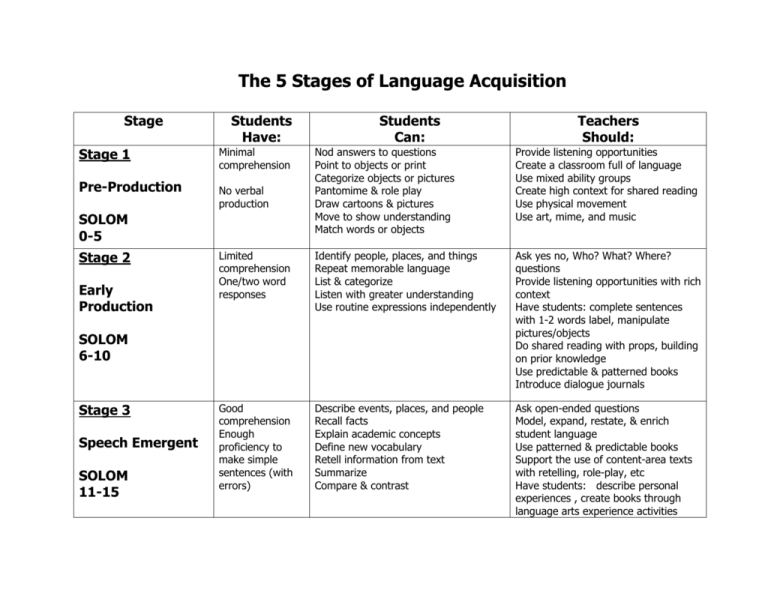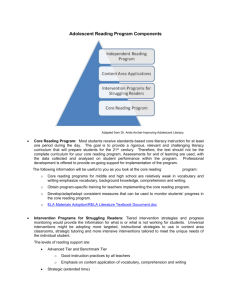The 5 Stages of Language Acquisition
advertisement

The 5 Stages of Language Acquisition Stage Stage 1 Pre-Production Students Have: Early Production Provide listening opportunities Create a classroom full of language Use mixed ability groups Create high context for shared reading Use physical movement Use art, mime, and music Limited comprehension One/two word responses Identify people, places, and things Repeat memorable language List & categorize Listen with greater understanding Use routine expressions independently Ask yes no, Who? What? Where? questions Provide listening opportunities with rich context Have students: complete sentences with 1-2 words label, manipulate pictures/objects Do shared reading with props, building on prior knowledge Use predictable & patterned books Introduce dialogue journals Good comprehension Enough proficiency to make simple sentences (with errors) Describe events, places, and people Recall facts Explain academic concepts Define new vocabulary Retell information from text Summarize Compare & contrast Ask open-ended questions Model, expand, restate, & enrich student language Use patterned & predictable books Support the use of content-area texts with retelling, role-play, etc Have students: describe personal experiences , create books through language arts experience activities No verbal production SOLOM 6-10 Stage 3 Speech Emergent SOLOM 11-15 Teachers Should: Nod answers to questions Point to objects or print Categorize objects or pictures Pantomime & role play Draw cartoons & pictures Move to show understanding Match words or objects Minimal comprehension SOLOM 0-5 Stage 2 Students Can: Stage 4 Intermediate Fluency SOLOM 16-20 Stage 5 Advanced Fluency SOLOM 21-25 Excellent comprehension Few grammar errors Near native speech Give opinions Justify views or behaviors Negotiate with others Debate with others Defend actions & opinions Persuade Express the results of synthesis, analysis, and evaluation Produce written and oral language that is comparable to that of native speakers of English of the same age Structure group discussions Guide use of reference materials Provide more advanced literature Ask students to create narratives Provide for a variety of realistic writing opportunities Publish students’ writing Continue on-going language development through integrating language arts and content-area activities






